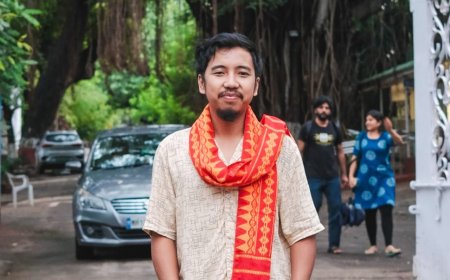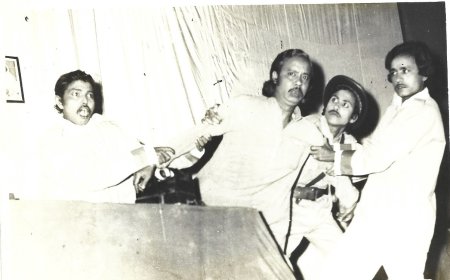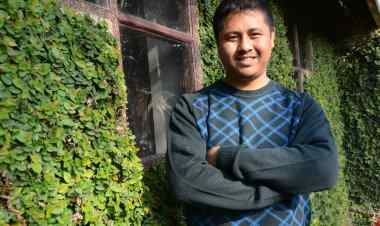INTERVIEW WITH PREMENDU BIKASH CHAKI ON HIS FILM LOVE MARRIAGE
Premendu Bikash Chaki, who started his career in cinematography in the 1990s under master cinematographers Sunny Joseph and Sudeep Chatterjee, speaks with Dr. Shoma A. Chatterji. Chaki worked as a cinematographer for directors ranging from Aparna Sen to Prabhat Roy and Subrata Sen.
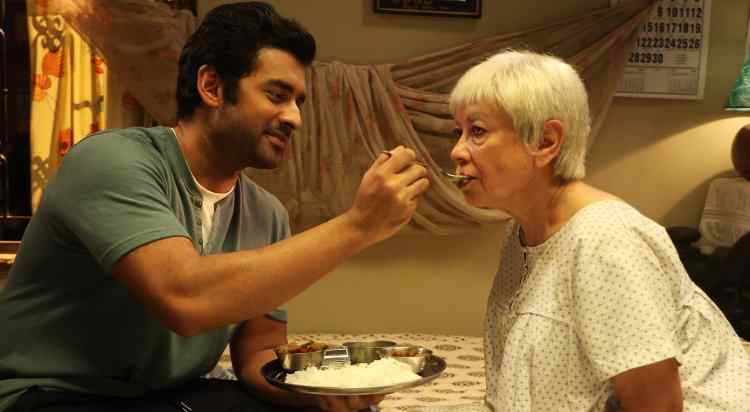
Noted Indian film scholar and author Dr. Shoma A. Chatterji is in conversation with the filmmaker Premendu Bikash Chaki.
Meet Premendu Bikash Chaki who began his career in cinematography under the master cinematographer Sunny Joseph and Sudeep Chatterjee in the 1990s and cinematographed for directors right across the Bengali Cinema map ranging from Aparna Sen through Prabhat Roy and Subrata Sen. He gravitated to direction with films like Raater Atithi (2016), Honeymoon (2018), Paka Dekha (2022) and now, Love Marriage (2023). As cinematographer, he has won the BFJA award thrice and other awards as well. Love Marriage is a very fun-filled, entertaining film that the entire family will enjoy watching. He speaks about this film in a detailed interview.
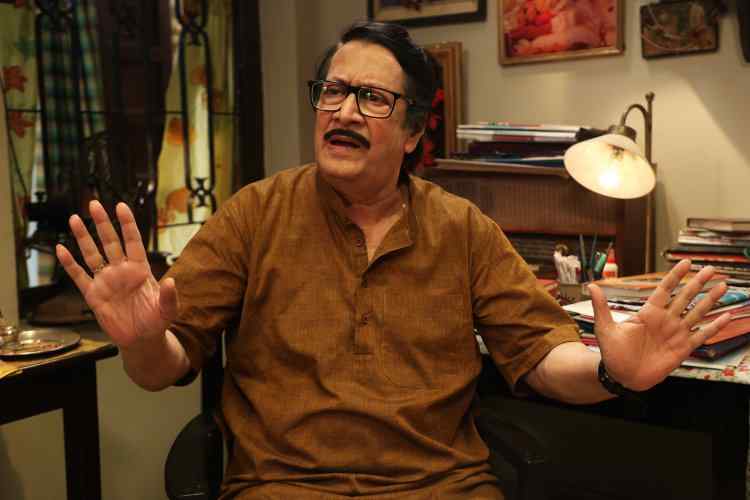
Image: Ranjit Mullick
What was the trigger that led to this film called Love Marriage?
Noted script and dialogue writer Padmanava Dasgupta and myself were discussing for long that we wanted a story that would make our audience break out in unadulterated laughter and enjoy the film with a happy heart, that used to happen in Bengali films once upon a time. A kind of family humour minus any vulgarity or obscenity and the entire family could sit back together and have a hearty laugh watching the film. The family should be in the same comfort level. I am grateful to Padmanava for this idea and that is what we carried out together to make the film.
As director, we have observed that you are inclined more towards comedy. Why?
I believe that it is easier to hit the audience with sharp dialogue and make it cry. But making people laugh just by putting a script together and weaving a clean, amusing story is very, very difficult. This was a challenge for me and I love to work out challenges. This is perhaps the reason that pushes me to lean on comedy. Comedy is also a good and helpful way to turn our Bengali audience back to the theatres.
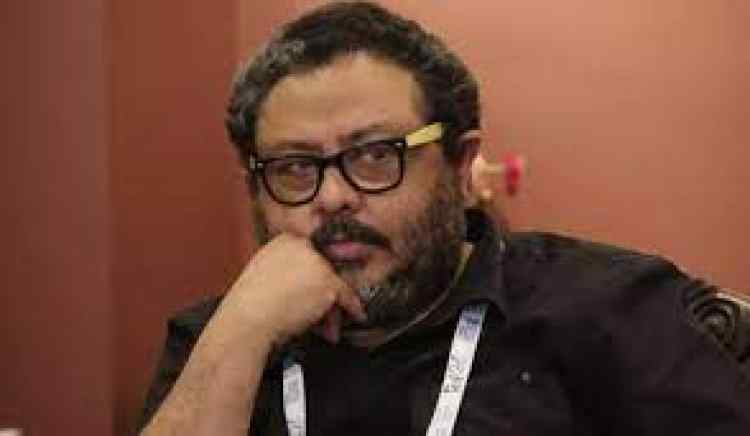
Image:
How did you decide on your select casting?
Right at the scripting stage, we had decided on Ranjit Mullick to portray Mahim Sanyal, the head of the Sanyal family. Once Ranjit-da agreed to the script and to work in the film, we began rounding up the rest of the cast. Now, the father-son duo needed to be integrated into the single family and had also be conversant with the comic in acting. To my mind, Ankush fit the role just right. His real-life relationship with Oindrila would fit my script ideally is what I felt. They have proved my faith in them. The character of Sohag Sen, the 93-year-old mother of Mahim Sanyal I had picked from two of my own family members who suffered from partial Alzheimer’s and Sohagdi di was not just the right choice but also a wonderful actress. Once she heard the script, she readily agreed. Now one had to go looking for the mother of Oindrila and I felt Aparajita Addy would fit the bill. Having chosen the main cast, one cameo character was left which also had to be a good actor. So, we pencilled in Surajit Bandopadhyay, a veteran of the Bengali stage who is a very good actor for the role of Oindrila’s father and Aparajita’s husband who has become a sanyasi but lives in the same city. The rest of the minor cast was drawn directly from theatre.
How difficult was it for you to direct veteran actors like Ranjit Mullick and Sohag Sen?
I have had experience of working with Ranjit Mullick as director for another directorial film Honeymoon. Before that, as cinematographer, I had interacted with him at several levels. As far as Sohag di goes, our relationship goes back to many years and we have worked together but this is the first time we were working together for a film. We adjusted the post-lunch schedules to accommodate Ranjit-da’s need for an afternoon siesta post-lunch. Sohag-di always kept us updated about her theatrical engagements to help us plan her schedule. Both Sohag-di and Ranjit-da are extremely disciplined people. I am a disciplined person too so it was quite easy to work with them.
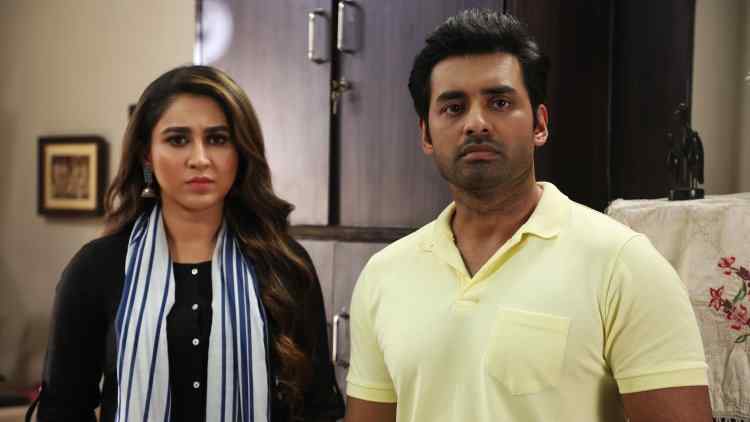
Image: film still
How do you design the arc of your direction? Rehearsals before the shoot? Workshops? How much improvisations do you allow your actors? What was the shot-take ratio like?
I have a regular practice of having rehearsals with the entire acting team before the real shooting begins. During these rehearsals, I also call my entire technical team such as the cameraman, the sound recordist, etc, to watch the rehearsals and set the trolley for different shots. I give them directions right at that time so that they are properly prepped when shooting begins. We always work on a short deadline so we have no time to waste when shooting begins. Since I have worked on celluloid for a major part of my profession, I still manage to work with a 3:1 shot-take ratio.
You are one of the most experienced cinematographers in the Bengali film industry. How do you manage the two different demands of cinematography and direction?
How do you control and manage the budgeting?
I keep a very discerning eye on the budget from the moment I choose the final script. This is precisely why I spend a lot of time on pre-production and this includes the setting being location friendly and if it happens to be a new place, I take into account what kind of problems might arise and prepare for them as and when needed. In such cases, I keep a Plan B ready.
Love Marriage as a film, deals with a very contemporary issue and is extremely focussed on entertainment backed by a solid script. The music is very good. What brief did you give to your music director?
My music director Savvy has taken great care with the music track of the film. The lyrics were penned before the music was composed. I explained very clearly to Sujato, Deepangshu and Savvy exactly what kind of music I desired for this film. My demand from them was to create simple lyrics fitted into simple music that could be easily memorised and sung. I wish these songs will soon find a place in Bengali marriages for good.
How will you mark yourself as a cinematographer and as director?
I think I would give myself 8 on 10 on both counts.
Which contemporary filmmakers in Bengali cinema do you truly admire?
I really would not like to mention any particular name because I just look for a touch of reality in films and these directors are to my liking. Even so, the two names I would love to mention are those of Shoojit Sarkar and Arun Roy.
Watching the film now that it is ready for release, what improvements would you have made?
Had I had some more time, I would have worked on some of the shots and would have polished them somewhat. Otherwise, nothing else.
What is your take on contemporary Bengali cinema?
The problem with a majority of Bengali cinema today is the tendency among directors today to impose their ideologies and/or their dislikes on the films they make. I feel that today’s filmmakers in Bengali cinema should focus on stories that will certainly appeal to the minds of the audience. They must use cinema to tell audience-friendly stories. Mainstream filmmakers ought to concentrate on reality and not on fantasy. The director can cleverly use his ideology by weaving it within the audience-friendly story.
Where was the shooting held and how long did it take to complete the shoot?
We shot the entire film over the brief span of 24 days and revolved around a housing complex in South Kolkata, in Bhawanipur, in the northern parts of Kolkata and also in areas around Barrackpur.
Anything else you might want to add?
I completed the work on the script towards the end of 2020. We had decided to begin shooting the film in the beginning of 2021 but problems blocked the attempts one after another. We shot a major slice of the film on the fourth floor of a housing complex within a small flat of 500 square feet. The building did not have an elevator so everyday, Sohag-di and Ranjt-da climbed up the three floors everyday for the shoot. We had to be very careful during the pandemic. Finally, we began shooting in October 2021 and the film is waiting for a theatrical release since January 2022.
***
What's Your Reaction?




































